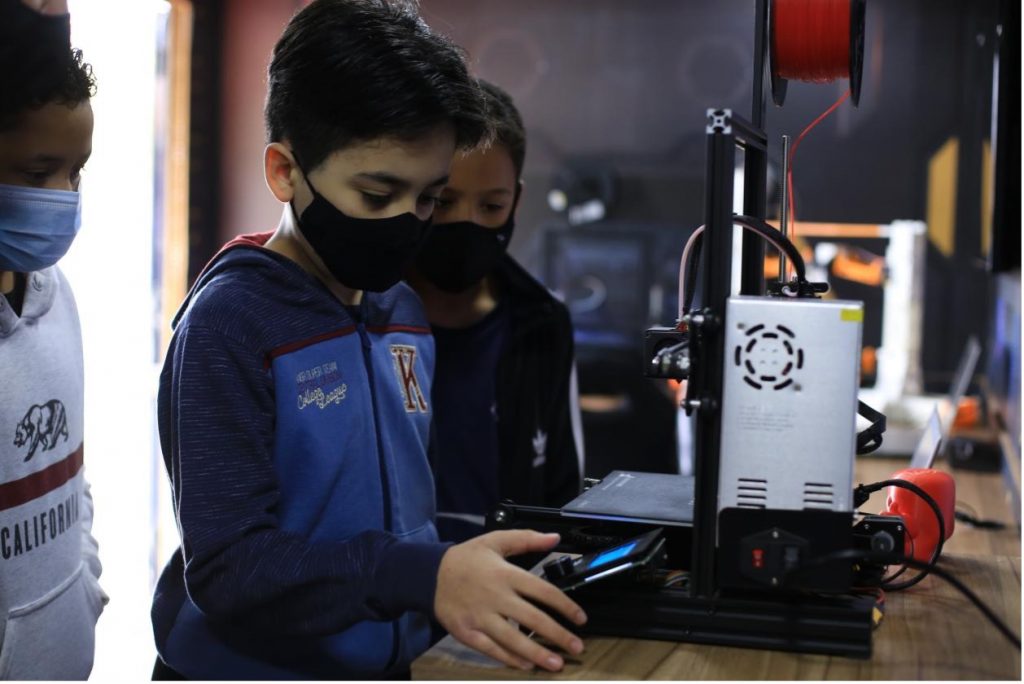Chinese 3D printer manufacturerCrealityhas announced its intention to back a Brazilian student training program known as the Space Robotics Project.
Set to run over the next four months,Robótica Espacial’sinitiative will see it load a truck with Creality machines and traverse Brazil, teaching pupils about 3D printing and robotics across the country. As part of the program, Creality has committed to donating 250 printers to local schools, and moving forwards, the firm says that the project could demonstrate the technology’s potential to “change the whole world.”
“Create reality, achieve dreams,” said Danjun Ao, CEO of Creality. “This is the philosophy that has been deeply rooted in Creality. At the launch of Space Robotics, I would like to take this opportunity to share this philosophy with our partners and with all Brazilian children: only by fulfilling our dreams, can we truly create the future of all mankind.”

Creality’s ‘evangelist’ goal
As a specialist in manufacturing easy-to-use 3D printers, Creality’s portfolio makes it an ideal backer for Robótica Espacial’s initiative. In addition to itsCR SeriesandCP Seriesof FDM machines, the company also offers its flagshipEnder systems, including several iterations of the Ender-3, as well as its Ender-5 Pro, Ender-5 Plus and the Ender-6 Core-XY.
Earlier this year, Creality updated its offering with thelaunch of the rapid Ender-7, a machine designed to ramp-up the pace of hobbyist production, and set a new speed benchmark for the Ender range. Featuring a dual motor-equipped Core-XY structure and linear rail positioning, the firm’s latest system is capable of printing at speeds of up to 250 mm per second, without sacrificing model accuracy.
However, as part of the Space Robotics Project, the company has chosen to donate batches of its more entry-level Ender-3 system, due to its accessible nature and better suitability for beginners, while more broadly, it sees its role in the initiative as part of its duty “as an evangelist, facilitating people to enjoy the convenience of 3D printing.”

The Space Robotics Project
Launched by theUniversity of Brasíliawith the support of the Brazilian Ministry of Science, Technology and Innovation, the Space Robotics Project is designed to provide improved access to robotics to the country’s students. To best achieve this, most of the initiative’s activities are being held in ‘virtual learning spaces,’ and take the form of educational games that challenge pupils with engineering tasks.
这些类尤其集中在使用of mechanical tools, and parts such as microcontrollers, LEDs, electrical systems and bluetooth modules, to construct robotic prototypes. In the process, Robótica Espacial hopes that pupils gain an understanding of such components, especially how they’re assembled, configured and programmed.
The project is also backed by the Brazilian Space Agency (AEB), and it ties intoNASA’sArtemis mission to return to the Moon, given that it’s set to task pupils with building a lunar rover. While Robótica Espacial believes that the project will provide the students with the skills they need to become the next generation of astronauts, the AEB’s current crop is now developing a real rover for launch in 2023.
One small step for education
For its part, Creality is contributing to the Space Robotics Project by equipping Robótica Espacial’s mobile ‘TECNOMOB’ 3D printing lab, which will visit 25 schools from August to November 2021. Set to be used in tandem with the initiative’s online platform, the truck’s equipment should allow participating students to put what they’ve learned into practise, further embedding acquired skills for the future.
Given that many of the country’s remote areas have little access to advanced technologies, Creality also sees its contribution as a chance to continue on its mission to “popularize 3D printing among young people,” and views the project as a starting point from which it can work with other organizations across the globe to “pass on a spirit of public welfare.”
At the project’s live launch on September 9, 2021, Creality’s CEO Danjun Ao told Brazil’s Chinese ambassador Liang Tian, along with the hundreds of Brazilian teachers watching online, that students should use 3D printing to “chase their space dreams.”
“We regard this [project] as a great opportunity to fulfill our role as a 3D printing evangelist,” explained Ao. “Thanks to [game developer]Bebyte, who also has the same goal of helping the children in Brazil to acknowledge 3D printing technology, we can walk along with each other towards the same direction.”
To stay up to date with the latest 3D printing news, don’t forget to subscribe to the3D Printing Industry newsletteror follow us on推特or liking our page onFacebook.
For a deeper dive into additive manufacturing, you can now subscribe to ourYoutubechannel, featuring discussion, debriefs, and shots of 3D printing in-action.
Are you looking for a job in the additive manufacturing industry? Visit3D Printing Jobsfor a selection of roles in the industry.
Featured image shows a Brazilian student using a Creality 3D printer. Photo via Creality.



